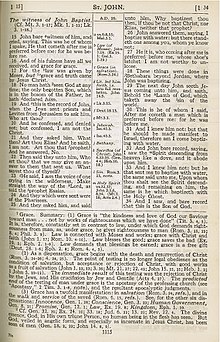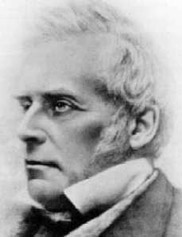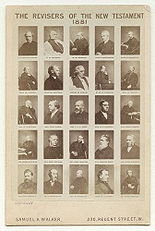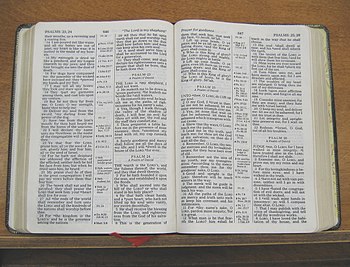Our Ukrainian brothers and sisters
In the country where before the invasion by the Russians lived about 50 million people, we can find people who have been exposed to a variety of religious beliefs.
The Orthodox Church – 10th-21st Century
In the tenth century, the Eastern Orthodox religion was introduced to become in 2018 the Orthodox Church of Ukraine.
Metropolitan Epiphanius of Kyiv and All Ukraine, Serhii Petrovych Dumenko, Epiphanius I of Ukraine, primate of the Orthodox Church of Ukraine (OCU), holding the title of Metropolitan of Kyiv and All Ukraine.
The church was united at the unification council in Kyiv on 15 December 2018 as a condition for recognition of it by the Ecumenical Patriarchate of Constantinople and was granted the tomos of autocephaly (decree of ecclesial independence) by the Ecumenical Patriarchate of Constantinople in Istanbul on 5 January 2019. The unification council voted to unite all the existing Ukrainian Orthodox major jurisdictions: the Ukrainian Orthodox Church – Kyiv Patriarchate (UOC-KP) and the Ukrainian Autocephalous Orthodox Church (UAOC) as well as a part of the Ukrainian Orthodox Church of the Moscow Patriarchate (a branch of the Moscow-based Russian Orthodox Church, which claims jurisdiction over Ukraine). The Unification Council elected Epiphanius Dumenko – previously the Metropolitan of Pereiaslav-Khmelnytskyi and Bila Tserkva (UOC-KP) – as its primate, the Metropolitan of Kyiv and all Ukraine.
Catholicism, Islam and atheism
Later the Ottoman Empire brought Islam to southern Ukraine. Also, Polish noblemen were spreading Catholicism during the Middle Ages.
In the 20th century, many became atheists under the rule of Communism, though also a lot of religious people practised their religion in secret.
For the Bible students in the country, such religious practice in secret was nothing new, as they always had to keep themselves safe from repercussions from Trinitarian Christians, who regarded non-trinitarians as the devil.
Cross-border seeds of faith – 9th – 13th Century
Devoted Bible readers living in the Principality or, from 1253, Kingdom of Galicia–Volhynia, one of the three most important powers to emerge from the collapse of Kievan Rus’ (loose federation in Eastern Europe and Northern Europe from the late 9th to the mid-13th century) By the Mongol invasion the Byzantine teaching of a three-headed god was replaced in the regions by the singular God by the Muslims, which made it somehow more comfortable for the Bible students to show others how the Singular God had provided His begotten son to rescue the world.
16th Century
In the 16th century, several people interested in the Word of the Only One True God by seeking refuge from their persecution by state churches in the Holy Roman Empire (mostly Germany today) and other European states, found their way into regions which became later ruled by Poland, Romania, and Czechoslovakia.
Because everything had to be done in secret, like in many other countries throughout Europe, it was not so easy to enlarge the community. Certainly, because they did not consider people who had a child baptism and who believed that Jesus is God, to be real Christians. This provided for a lot of controversy throughout the ages.
Jews opposing Charles Taze Russell his teaching
Charles Taze Russell, a leading Bible Student, at the end of the 19th century visited many countries in Europe and the Middle East. On his way to what was then Constantinople, Turkey, he visited Odessa in southern Ukraine in 1891. Later, in 1911, he gave a series of Bible lectures in major cities of Europe, including the city of Lvov or Lviv in western Ukraine. Lviv has historically been the chief centre of Galicia, a region now divided between Ukraine and Poland. Its position controlling east-west routes and passes across the Carpathians has given it a stormy history, but made it also a region of moving Biblestudents going from one place to another, spreading the faith, bringing a continuation of true New Testament Christianity over Eastern Europe.
Strangely enough, it was a Jewish rabbi from the United States who fiercely opposed Russell’s work who cabled a message to his associates in Lvov, denouncing the Bible Students. This incited some to try and stop Russell from speaking. About that night, Russell said
“God alone knows what his providences may be in connection with these experiences. . . . [The Jews’] excitement on the subject may lead some to a deeper investigation than if they had heard us in a decent and orderly manner.”
Though there was no immediate response to the message, seeds of truth had been sown, and many groups of Bible Students were formed later, not only in Lvov but also in other areas of Ukraine.
After World War I
Following World War I, Ukraine was divided among four neighbouring countries. The territories of central and eastern Ukraine were seized by Communist Russia and incorporated into the Soviet Union. Western Ukraine was divided among three other countries. The areas of Halychyna and Volyn’ were annexed to Poland, Bukovina to Romania, and Transcarpathia to Czechoslovakia. These three countries provided a measure of religious freedom and permitted the Bible Students to carry on their preaching. Thus, many seeds of truth that were to bear fruit later were first sown in western Ukraine.
In the early 1920’s, seeds of truth were sown in Halychyna and Volyn’ by Bible Students from Poland. Meanwhile, brothers from Romania and Moldavia (now Moldova) brought the truth into the Bukovina region.
This laid a good foundation for further growth. The Watch Tower of December 15, 1921, reported:
“Recently some of our brethren visited [Bukovina] . . . The result of their visit there for a few weeks is seven classes organized and now studying the volumes and ‘Tabernacle Shadows’. One of these classes has about 70 members.”
In 1922 in the village of Kolinkivtsi, in Bukovina, Stepan Koltsa accepted the truth, was baptised, and began preaching. Later ten families joined him. Similar growth occurred in the Transcarpathian area. By 1925 there were approximately 100 Bible Students in the village of Velyki Luchky and neighbouring villages. Following that, the first full-time servants began preaching in Transcarpathia, conducting meetings in the homes of the Bible Students. Many people asked the office in Brooklyn to send more books and pamphlets so that more people could be reached and baptised.
Such keen interest resulted in the establishing of an office of the Bible Students on Pekarska Street in Lvov. The office received many requests for literature from Halychyna and Volyn’ and regularly forwarded them to Brooklyn to be filled.
Like in many countries,several of the Biblestudents working on their own, and not having a connection with central organisations, made that we do not have exact figures of baptised Biblestudents. Though we now of ecclesiae having 50 to 100 baptised people.
In the 1920s there were were 15 publishers who had to exert themselves in order to work through the many villages with literature twice a year. Every Sunday at four o’clock in the morning, they met together at one of the village to start their house-to-house ministry at 8:00 a.m. to work until 2:00 p.m..
Since Roman Catholics and Greek Catholics have their Christmas celebrations during different weeks the brethren made use of it to bring singing sessions, but soon they stopped with those liked activities because they saw how wrong it was to be connected with that pagan festival of Christmas.
Willing to come more into the open there was decided to have a first convention of Bible Students in the Transcarpathian area. It was held in the village Velyki LuchkyIn, in the Mukachevo Raion in the Zakarpattia Oblast (province) in southwestern Ukraine, May 1926. There were 150 in attendance, and 20 were baptised. The following year 200 persons attended a convention in the outdoor central park of Uzhgorod, a city in the same region, which had passed to Czechoslovakia in 1919, to Hungary in 1938, and to the Soviet Union during World War II. Soon other conventions were organised in various towns of Transcarpathia. In 1928, Lvov had its first convention. Later, other conventions took place in Halychyna and Volyn’ that after World War II became part of the Ukrainian S.S.R..
Despite the fact that some halls Biblestudents had built, were destroyed during the war and some were confiscated, the brothers maintained the desire to have their own Kingdom Halls and got meeting places all over the country. (Presently, there are 8 Kingdom Halls of the Jehovah’s Witnesses in the village of Dibrova and 18 Kingdom Halls in six neighbouring villages).
Before World War II the majority of our brethren and sisters could be found in the West of Ukraine. Today they may be found all over Ukraine.
That Biblestudents are not spared the grim consequences of war, could already be seen in the Second World War, but now also with this Ukrainian war with Russia. But also when there was no war, like from 1951 till the middle of the 1960’s, with the majority of the brothers imprisoned or exiled, our community had to be very careful how to preach or come into the open. Many brothers and sisters ended up in one of the 54 prison camps throughout the entire Soviet Union. In many congregations, it became necessary for sisters to take the lead.
Concealed in cellars
Today there are grandparents who feel like they are back in the old days when they had to hide in cellars and forests. Others remember how they gathered several times a week in the late evening or well into the night. They curtained their windows with heavy cloth in order to avoid detection and studied by kerosene lamp. Often the exhortations were only distributed on a written paper. Later, brothers began to receive magazines printed on duplicating machines. In KGB times the secret service was unrelenting in their determination to locate meeting places of Biblestudents so that they could punish the responsible brothers.
In Communist times holding the Memorial was the most challenging. But now with the Russians bombing Ukraine it has also become a very big challenge. Last 14 Nisan (15 of April 2022) several of our brethren and sisters did everything to make the best out of the evening. Though in several villages and cities there was not even drinkable water to prepare a meal. Bottles of alcohol brought salvation to have something extra in this time of distress.
Normally Biblestudents open their meeting to all who want to come to listen to what we have to tell. Last year there was Corona that prevented such a gathering. This year our Ukrainian brethren could not invite many. Some of them were already pleased that they could prepare a meal for 7 people, with the limited foodstuffs they still had available.
After more than 50 years of bans and persecution, today it looked again as if a period of aggression and ordeal had come over them. Some of our younger brethren had sent their youngsters to leave Ukraine, but after the bombing of the Kramatorsk station, they are now in the dark about what happened to their family members.
Having been able to meet with like-minded friends, for many it was like they belonged to the escaped ones and on that night it was as if they were resurrected from the dead by the Power of God. Even when lots of their assets were gone up in the fire, they still felt rich in the Gory of God that they were able to celebrate that special weekend in these times of war. Normally the Ukrainians eat a lot of potatoes, but this time they were not at the party nor any lamb.
While the sirens were sounding regularly, they quietly read the Bible passages and listened to the elder’s speech. Whilst bombs and weapons did not keep silent, they expressed their hope to live in a world where free nations are assertive and in the ascendant … where freedom and democracy are strengthened through a network of economic and security partnerships, and most importantly they all look forward to the return of Christ, though that would mean there shall be first that Great Tribulation. But for them, it could well be that we are already in that predicted Third World War.
Some saw this special evening also as a night to be liberated from the modern plagues. At the same time some were sad that some of their family members living in Russia do have a totally different picture of what is going on in Ukraine. The modern snake is clearly doing its work and by spreading misinformation gets tornness in otherwise close-knit families. This is one of the most terrible things that these people now have to endure in their families, a part that does not want to believe that they are being slaughtered by Russia’s murderous army.
While others have fled the country, some Ukrainian brothers and sisters have stayed in place — either bound to the land, too old or ill to travel, or simply lacking other options.
+
Preceding
Coming together for a meal to remember a special lamb
Coming together for a meal to remember a special lamb
Jesse Hemery and the The Goshen Fellowship
When Belonging to the escaped ones gathering in Jesus name
Those who Jesus can call friends
Most important weekend of the year 2016
The Most important weekend of the year 2018
2021 Memorial of Christ’s death
Another year of 14 Nisan with restricted access
Celebrating the evening of 15 April 2022 as a festival to Jehovah God
++
Additional reading
- A useless but very dangerous challenge game
- Great tribulation and Armageddon
- Armageddon or the Great Tribulation
- What makes you following Christ and Facebook Groups
- Christadelphian brothers and sisters in Ukraine
- The one who claimed he was not planning an invasion in Ukraine
- Does the population of Russia know what the Russian soldiers are doing in Ukraine
- Russian army wants to make Ukraine the Syria from Europe
- Weekly World Watch March 13 – 19, 2022
- Stories to read in the week of March/April 2022 in the Independent
- The Guardian’s view on Ukraine for the first half of April 2022
- Has Ukraine become a Symbol of ‘Freedom’
+++









 It was after 25 years serious research that in 1881 the British bishop, biblical scholar and theologian, and
It was after 25 years serious research that in 1881 the British bishop, biblical scholar and theologian, and 










 It was his successor as society president,
It was his successor as society president, 
 Already around the turn of the 18th to 19th century women had started wanting to have a stronger voice in the education of children. Also parents started looking more at how to bring up children together in a community. They had seen the public school system starting to develop going away from certain ways of life preferred by them. The spiritual aspect was important and could not be forgotten. Discontented with the new public school system more
Already around the turn of the 18th to 19th century women had started wanting to have a stronger voice in the education of children. Also parents started looking more at how to bring up children together in a community. They had seen the public school system starting to develop going away from certain ways of life preferred by them. The spiritual aspect was important and could not be forgotten. Discontented with the new public school system more 

 The Bible was also published in several languages by Elias Hutter (Nuremberg, 1599-1602), and by Christianus Reineccius (Leipsic, 1713-51). Ten years before the “Polyglot Bible in eight languages” (2 vols., London, 2nd ed. 1874) the
The Bible was also published in several languages by Elias Hutter (Nuremberg, 1599-1602), and by Christianus Reineccius (Leipsic, 1713-51). Ten years before the “Polyglot Bible in eight languages” (2 vols., London, 2nd ed. 1874) the  In this Interlineary literal Word for Word English translation ‘Signs of Emphasis’ were given; whilst under each Greek word the English equivalent is printed. In the slim right-hand column of each page is presented a modern English translation as made by Benjamin Wilson. Also a copious selection of ‘References’; many appropriate, illustrative, and exegetical ‘Foot-notes’; and a valuable ‘Alphabetical Appendix’ are given. This combination of important items could not be found in any other book at that time.
In this Interlineary literal Word for Word English translation ‘Signs of Emphasis’ were given; whilst under each Greek word the English equivalent is printed. In the slim right-hand column of each page is presented a modern English translation as made by Benjamin Wilson. Also a copious selection of ‘References’; many appropriate, illustrative, and exegetical ‘Foot-notes’; and a valuable ‘Alphabetical Appendix’ are given. This combination of important items could not be found in any other book at that time. Bible students form the Zion’s Watchtower suggested that,
Bible students form the Zion’s Watchtower suggested that,

















 Bijbelvorsers Webs
Bijbelvorsers Webs Belgische Vrije Christadelphians / Belgian Free Christadelphians – Old Google Main Website
Belgische Vrije Christadelphians / Belgian Free Christadelphians – Old Google Main Website Christadelphian Ecclesia
Christadelphian Ecclesia Hoop tot Leven – Redding in Christus
Hoop tot Leven – Redding in Christus
Recent Comments